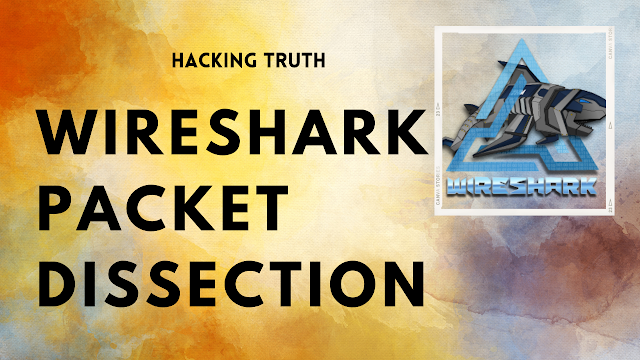Packet Dissection
Packet dissection is also known as protocol dissection,
which investigates packet details by decoding available
protocols and fields. Wireshark supports a long list of
protocols for dissection, and you can also write your dissection
scripts. You can find more details on dissection here.
Note:
This section covers how Wireshark uses
OSI layers to break down packets and how to use these layers for
analysis. It is expected that you already have background knowledge of the
OSI model and how it works.
Packet Details
You can click on a packet in the packet list pane to open its details
(double-click will open details in a new window). Packets consist of 5
to 7 layers based on the OSI model. We will go over all of them in an
HTTP packet from a sample capture. The picture below shows
viewing packet number 27.
Each time you click a detail, it will highlight the corresponding part in the
packet bytes pane.
Let's have a closer view of the details pane.
We can see seven distinct layers to the packet: frame/packet, source
[MAC], source [IP], protocol, protocol errors, application protocol, and
application data. Below we will go over the layers in more detail.
The
Frame (Layer 1): This will show you what frame/packet you are looking
at and details specific to the Physical layer of the OSI model.
Read More - Wireshark Network Capture Traffic
Source [MAC] (Layer 2): This will show you the source and destination MAC Addresses; from the Data Link layer of the OSI model.
Source [IP] (Layer 3): This will show you the source and destination IPv4 Addresses; from the Network layer of the OSI model.
Protocol (Layer 4): This will show you details of the protocol used (UDP/TCP) and source and destination ports; from the Transport layer of the OSI model.
Protocol Errors: This continuation of the 4th layer shows specific segments
from TCP that needed to be reassembled.
Application Protocol (Layer 5): This will show details specific to the
protocol used, such as HTTP, FTP, and SMB. From the Application layer of
the OSI model.
Application Data: This extension of the 5th layer can show the application-specific data.
Now that we understand what a general packet is composed of, let's look at various application protocols and their specific details.
















